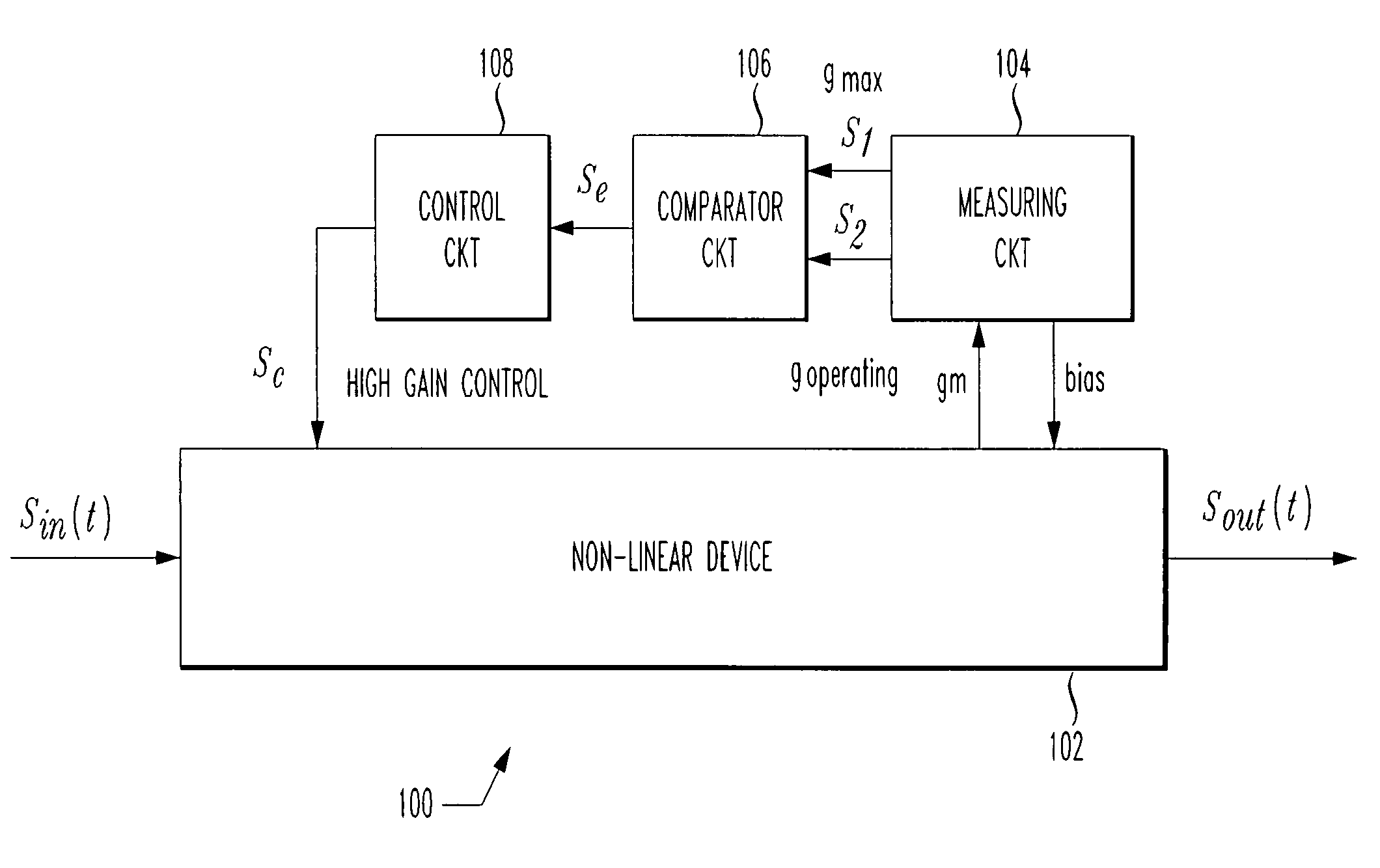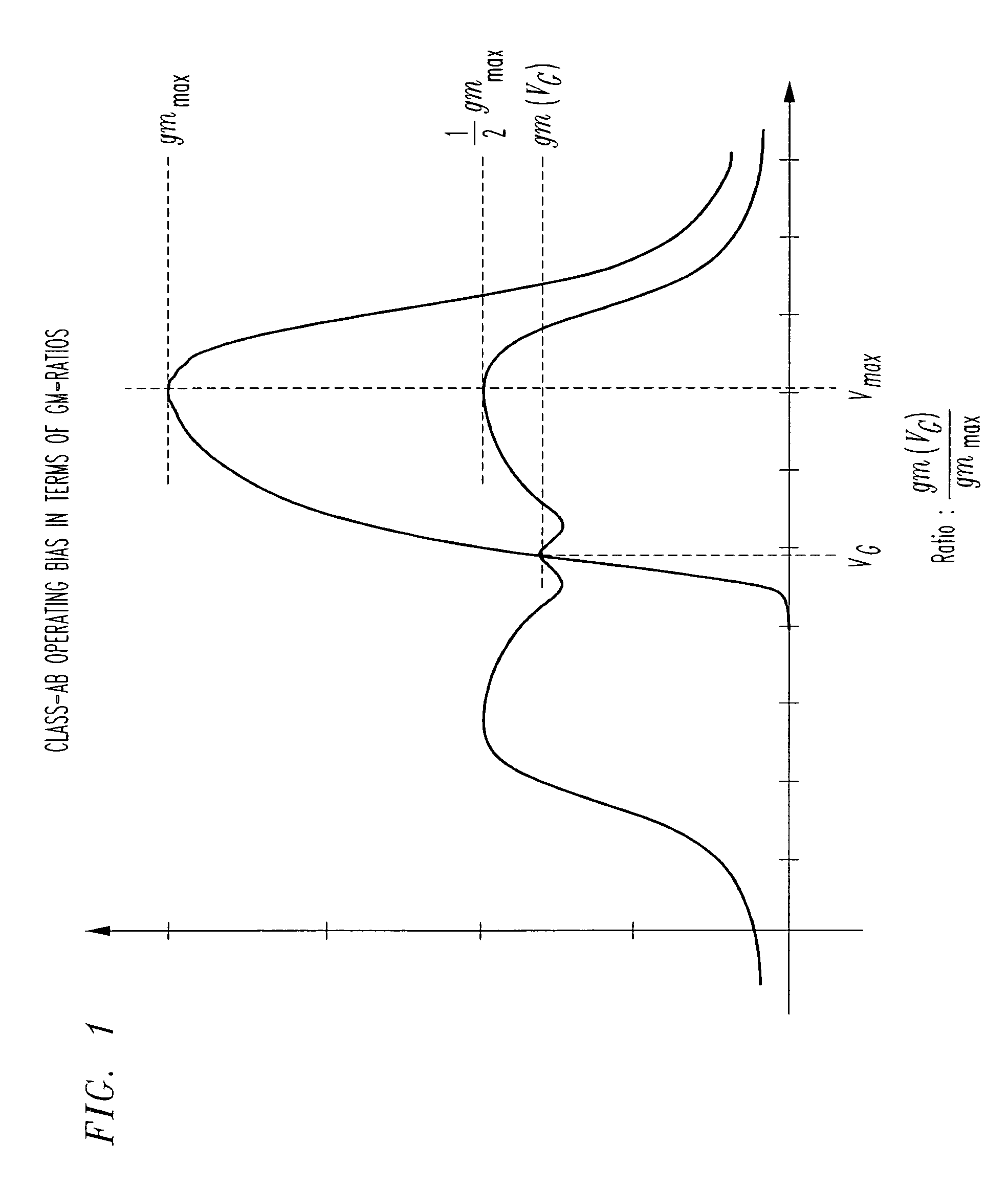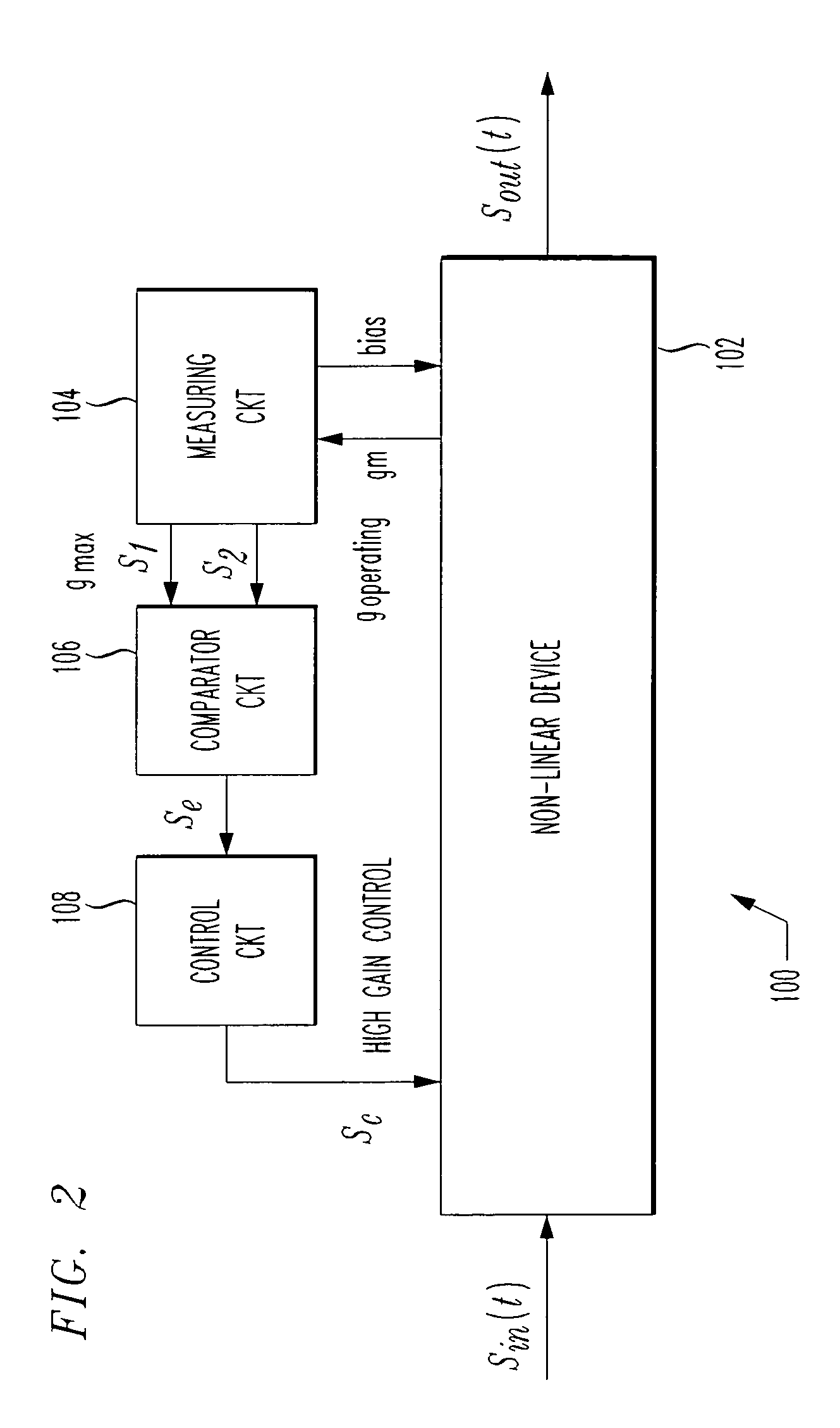Automatic biasing of a power device for linear operation
a power device and linear operation technology, applied in the direction of amplifiers, amplifiers with semiconductor devices/discharge tubes, amplifiers, etc., can solve the problems of reducing the product yield potential, not living in an ideal world, and conventional devices still have some degree of degradation
- Summary
- Abstract
- Description
- Claims
- Application Information
AI Technical Summary
Benefits of technology
Problems solved by technology
Method used
Image
Examples
first embodiment
[0033]FIG. 2 shows the present invention wherein a measuring circuit measures the transconductance of the non-linear device at two distinct operating points, in accordance with the principles of the present invention. The circuit of FIG. 2 provides true feedback in that the gm that needs to be constrained is measured directly.
[0034]As shown in FIG. 2, the operating point of an electronic circuit 102 is controlled through a feedback loop including a measuring circuit 104, a comparator circuit 106, and a control circuit 108.
[0035]The electronic circuit 102 is any device that produces an analog output signal from an analog input signal. The electronic circuit 102 contains a non-linear device (e.g., a Class AB amplifier) that can be characterized using a non-constant transconductance (gm) to voltage relationship. The electronic circuit 102 includes a terminal that changes the operating point of the non-linear device and alters device transconductance.
[0036]The measuring circuit 104 rece...
second embodiment
[0045]FIG. 3 shows the present invention wherein a measuring circuit including replica device(s) measures the transconductance of the non-linear device at two distinct operating points, in accordance with the principles of the present invention.
[0046]In particular, as shown in FIG. 3, a master-slave topology is formed. Importantly, the feedback loop does not include the electronic circuit whose transconductance gm will be constrained. Rather, the loop is built around a replica device(s) and the desired transconductance (gm) constraint is achieved indirectly by similarity between the replica devices in the measuring circuit 304, and the non-linear device in the electronic circuit 102.
[0047]The circuit of FIG. 3 is easier to implement because no measurements are taken directly upon the non-linear device, so the signal processing in the electronic circuit 102 may continue uninterrupted.
[0048]Equations governing the operation of the system shown in FIG. 3 are as follows. Equations gover...
third embodiment
[0055]FIG. 4 shows the present invention wherein two separate measuring circuits each including replica device(s) measure the transconductance of the non-linear device at two distinct operating points, in accordance with the principles of the present invention.
[0056]In particular, as shown in FIG. 4, a master-slave topology is implemented similar to that of FIG. 3, but using two separate measuring circuits 404, 405, each containing its own replica device. The circuit of FIG. 4 is easy to implement because no measurements are made upon the non-linear device in the electronic circuit 102. The signals S1, S2 output respectively from the two measuring circuits 404, 405, are derived by measuring two separate replica devices. The system of FIG. 4 assumes similarity between the non-linear device of the electronic circuit 102 and the replica devices used in the first measuring circuit as well as the replicas used in the second measuring circuit.
[0057]Note that in the system of FIG. 4, the f...
PUM
 Login to View More
Login to View More Abstract
Description
Claims
Application Information
 Login to View More
Login to View More - R&D
- Intellectual Property
- Life Sciences
- Materials
- Tech Scout
- Unparalleled Data Quality
- Higher Quality Content
- 60% Fewer Hallucinations
Browse by: Latest US Patents, China's latest patents, Technical Efficacy Thesaurus, Application Domain, Technology Topic, Popular Technical Reports.
© 2025 PatSnap. All rights reserved.Legal|Privacy policy|Modern Slavery Act Transparency Statement|Sitemap|About US| Contact US: help@patsnap.com



